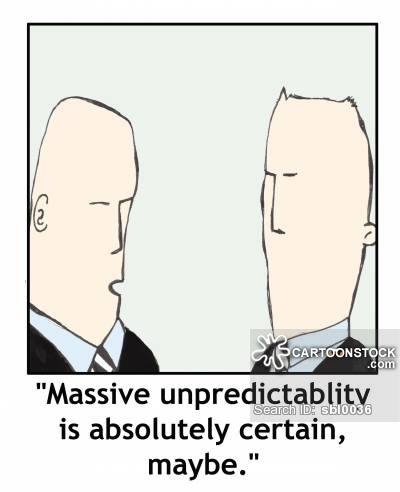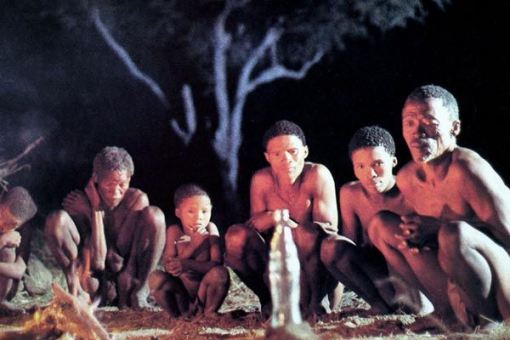ALL BUILDINGS ARE PREDICTIONS. ALL PREDICTIONS ARE WRONG.
-Stewart Brand (How Buildings Learn, 1994)
With all of the available expertise and intellect, and the way mankind is growing, there’s no one who can predict what the future is going to be like in five years. And yet we design buildings that last for several decades (or more) for a future that we are totally unprepared for. With new technology and innovations reshaping the world around us and the way humans function and behave, we must concede that the only constant is change. This is a huge responsibility that lies with the architect, for he/she looks to solve a problem that has no correct answer.

‘Massive unpredictability is absolutely certain, maybe.’
ON INCENTIVES
Once upon a time, a daycare was plagued with late pickups. Notes were sent home, making the case for timely pick up in the name of respect for those who had to stay with the children and the children themselves, but there was no change. Another note was sent home. A financial penalty for late pickups would start effective immediately.
The result? The late pickups increased exponentially. Why? The guilt had been removed and the financial penalty was so low the late pick-up was now a parental perk that was accessible to most of the families. The lesson to learn here is simple: incentives don’t always as intended.
An incentive has to be designed, keeping in mind the variables that come into play. This example from Freakonomics (Steven Levitt and Stephen Dubner, 2005) can help understand why increased taxes on cars in several countries (India, for example) have not been able to have a considerable impact on car sales. It is these connections that need to be worked on to create the cities we dream of.
It is but human nature to satisfy imminent wants, even knowingly bringing along a perilous situation, or sacrifice what may be a huge opportunity in the future. The tragedy of the commons unfortunately still governs most human behavior in our cities.
Chennai, a major metro city in India was submerged as incessant showers hit just a few weeks back, and the mess that followed was a direct result of builders and contractors (and governments!) eating into the floodplains of Adyar. The capital, New Delhi is planning to implement vehicular restrictions starting the 1st of January where cars with odd and even numbered license plates will be allowed to ply on alternate days because the air pollution levels have become alarmingly high that living in Delhi I was compared by a study as smoking three cigarettes a day. In China, a new startup is now selling ‘bottled air’ and was actually sold out on the day of its launch as the country faces the worse pollution levels in recorded history. These dire measures have been brought about by a total disregard for things that should have been a priority a long time ago.

We say this in the wake of a historic coming together of nations in the Paris Climate Summit with all 195 participating countries coming to a consensus on a historic global pact to prevent climate change despite their varying economic positions. But perhaps it is a case of too little too late as human intervention has broken into the natural ecosystems of flora and fauna, rending entire species extinct and ridiculing the critical balance of nature.
Our incentives need to, now more than ever, be efficiently designed to create a major shift in behavior.
ON SUSTAINABILITY
One of the things that bothers me is that buildings in India had to shift to learning from the west for sustainable construction. In a design environment like India, sustainability was always a given. It is something that has reflected not only in the architecture or construction but also in the people themselves. But getting inclined towards what may seem more attractive without understanding the context of the building and forgetting the lessons of the past is something that the construction industry is buried deep into.
Another question that one must raise relates to the value of sustainable construction as seen by those responsible for most construction. Dubai is a city that has probably been doing what all environmentalists consider against the very laws of sustainable construction. From massive air conditioned glass boxes to artificial islands, to giant water parks, they have all that defies the very essence of sustainability – all towards building a new ecosystem, creating a hub to experience the best applications of technology and science.
Like the philosophical thought experiment goes – if a tree falls in a forest and no one is around to hear it, does it make a sound? – one may question that if this move actually manages to bring people into the city and generate alternate employment opportunities and give another income source than just oil, is it not sustainable?
ON RANDOMNESS
As Delacamara says, many times the randomness of human behavior guides urban development. But sometimes what may seem random actually is formed of a perfectly logical set of responses when analyzed from a different perspective.
Mapping and cartography of spaces tell so much about how things sometimes may not be as random as they seem. John Snow’s map exposed the reason for the outbreak for cholera during the London epidemic of 1854. This semester saw us mapping three very different things in Plaza Glories – trash, interaction and graffiti. However once the three maps were overlaid, they seemed to tell the same story. The stories of occupancy (trash), privacy (graffiti, as a measurement of how much time the artists got to engage in an illegal activity without getting noticed) and interaction perfectly overlay and add to a level of understanding of the space, saying some things which would otherwise have remained hidden.
Of course, much is left to randomness, but what isn’t understood normally may someday be through another set of parameters and analyses.
ENABLING TECHNOLOGIES – A PROPOSAL
I feel that many things may be unlocked through such pairings that say something, through the eyes of an architect. Oftentimes innovation is seen where we least expect it.
In The Gods Must be Crazy, the tribesmen find different uses for the bottle that they find. From making hide to music, they found not one but a variety of uses for this bottle and later the bottle tends to become an integral part of their life.

Sometimes it is great to put tools with the lowest rung of people, those who probably know nothing about how it works, but know what it does and then just sit back and watch.
It is a shame that most technology these days is focused on a small category of users, how most of the power is left in the hands of smartphone users. Innovation and human creativity know no bounds and should be explored thoroughly in every way. If we learn the result of bottom up approaches everywhere they are probably going to be similar. But what happens if one community got a tool that changed the course of their evolution. Where that takes them can be completely different and a learning opportunity that can inform the best of us.
There is a famous Indian drink, quite like a yogurt smoothie, known as lassi. A man who sold lassi in India was faced with the problem of growing crowds, and wanted to make work easier for himself. The solution – he got a washing machine and made his lassi inside one. It was making the link between a washing machine and a traditional churner that probably set off this trend as more and more people use their washing machines as a party smoothie blender. Examples of such innovation in the places where you least expect them are plenty.
I think one of the first things we as architects should be enabling is bridging the gap so that technology is not just universally available, but specifically available to the lowest rung of people who are actually the workers, the makers.
One of the first questions I had asked after getting to IAAC and the Fab-Lab was that if the Fab Lab had ever gone rural. I was told it hadn’t. I feel we’re missing a new range of possibilities by not taking these machines and merely making them available to do what they can after introducing them to the rural population. And by rural I mean people who aren’t the designed user base for a CNC miller or a laser cutting machine. People who are not exposed to the possibilities of digital fabrication and tools.
I can see this working in India. Carpenters, artisans, weavers, tailors, laborers of all kinds employed in making a variety of things with these new machines that can add another dimension to their ability to manipulate material. The idea will give more than just insight on how to use these machines – it will probably lead to the future of these machines in the sense of their application and use. It would be a great experiment, if nothing else, to see what happens if technology disrupts a linear evolutionary development process and that could be the icing on the cake.
There is only one way to discover this- to do it and I wait for the day I can either do something like this, or see it happen.